Floreana Island, Galapagos: Travel Guide (2025)
Floreana Island, a jewel of the Galapagos archipelago, blends volcanic landscapes, endemic wildlife, and tales of human intrigue. This guide covers everything from snorkeling Devil’s Crown to the conservation initiatives restoring its ecosystems.
Floreana Fast Facts
- Population: ~150 residents, the smallest of inhabited Galapagos Islands.
- Post Office Bay: A 1793 tradition where travelers hand-deliver letters.
- Green Sand Beach: One of four olivine crystal beaches worldwide.
- Mystery: Unsolved 1930s disappearances of European settlers.
- UNESCO Site: Part of the Galapagos National Park.
Floreana Activity Highlights
- Snorkeling Devil’s Crown: Submerged volcanic crater teeming with reef sharks and sea turtles.
- Post Office Bay’s Letter Drop: Participate in a 200-year-old tradition.
- Hiking to Baroness Viewing Point: Panoramic views of Floreana’s coastline.
- Kayaking La Lobería: Paddle alongside sea lion colonies.
- Birdwatching at Cormorant Point: Spot flamingos in coastal lagoons.
- Exploring Asilo de la Paz: Visit pirate-era freshwater springs.
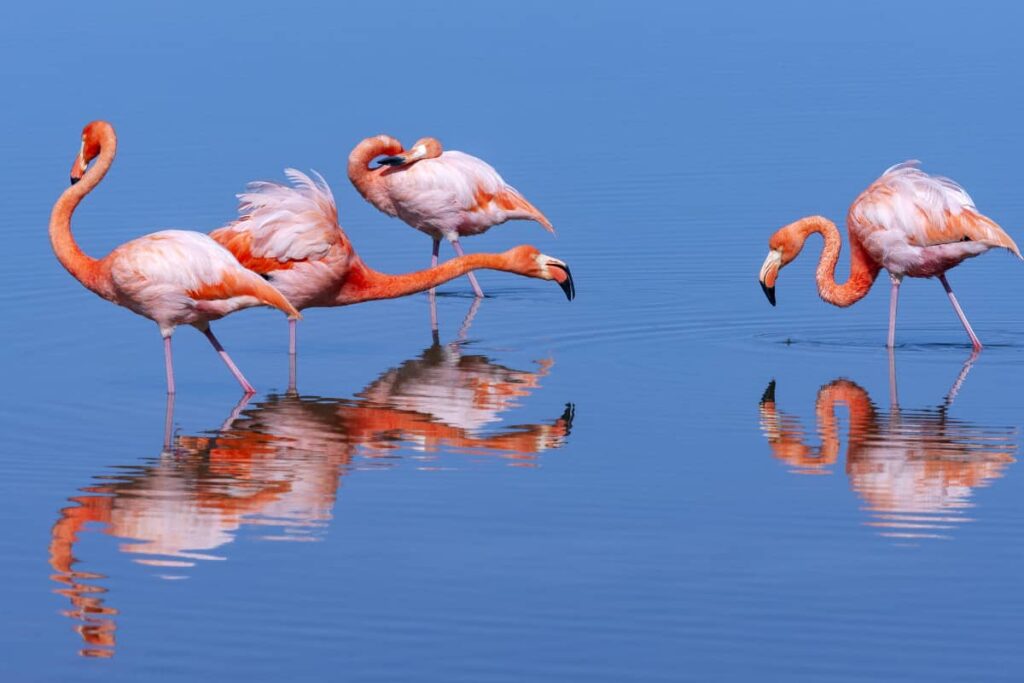
Floreana Animal Highlights
- Galapagos Giant Tortoise (Chelonoidis niger): Reintroduced in 2024.
- Floreana Mockingbird (Mimus trifasciatus): Critically endangered, found only here.
- Marine Iguana (Amblyrhynchus cristatus): The only seaweed-eating lizard.
- Whale Shark (Rhincodon typus): Seasonal giants near Champion Islet.
- Blue-Footed Booby (Sula nebouxii): Famous for colorful courtship dances.
History
In the 17th century, buccaneers like William Dampier used Floreana’s lava caves as hideouts to stash treasure and repair ships. These caves, such as Cueva de los Piratas, still bear carvings from sailors, offering glimpses into the island’s lawless past.
The 1930s saw a wave of disappearances linked to Baroness Eloise von Wagner, an alleged Austrian aristocrat who ruled over a small group of settlers. Her death—along with those of her lovers and rivals—remains unsolved, fueling theories of foul play or a secret escape.
In 1793, British whalers established a wooden barrel at Post Office Bay as an informal mail system. Sailors would drop letters here, trusting passing ships to the islands to deliver them—a tradition still practiced by tourists today.
Since 2020, Floreana has become a model for invasive species removal, with projects eradicating rats and goats that threatened Galapagos tortoises and Floreana Mockingbirds. These efforts aim to restore the island to its pre-human ecological state by 2030.
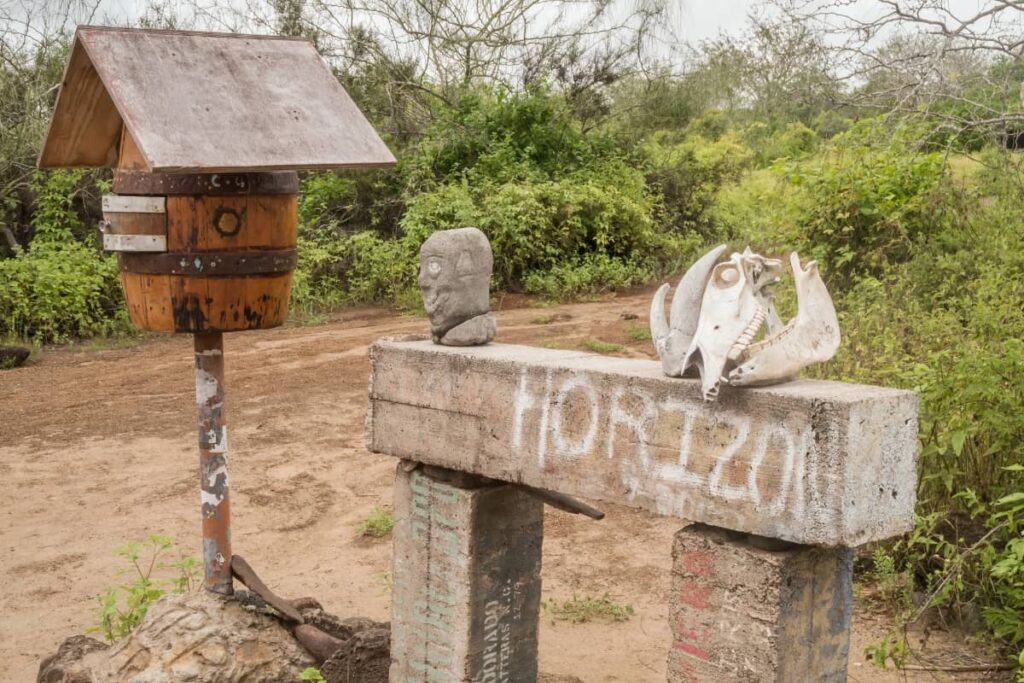
Geography
- Size: 173 km² (67 sq mi), formed by six extinct volcanoes.
- Elevation: Cerro Pajas, the highest peak, rises to 640 meters (2,100 feet).
- Beaches: Green Sand Beach (olivine crystals) and Flour Beach (white coral).
Getting to Floreana Island
Most visitors arrive via multi-day Galapagos cruises or island-hopping tours from Santa Cruz. Flights from mainland Ecuador land at Baltra Airport, followed by a ferry to Floreana Island.
Conservation Challenges
- Invasive Species: Introduced black rats (Rattus rattus) prey on the eggs of critically endangered Floreana Mockingbirds and Galapagos tortoises, decimating populations. Recent efforts, like the 2023 rodent eradication campaign, use drones to distribute eco-friendly bait across hard-to-reach areas, aiming to eliminate rats and feral cats.
- Habitat Restoration: Over 90% of Floreana’s native Scalesia forests—a unique highland ecosystem—were destroyed by invasive guava plants. Conservationists now replant seedlings annually, partnering with local schools to involve students in citizen science reforestation programs.
- Coral Regeneration: The Devil’s Crown coral restoration project (2025–2030) targets bleaching caused by rising sea temperatures. Divers transplant heat-resistant coral fragments from nurseries to revive the reef, which shelters Galapagos penguins and whale sharks.
- Community Involvement: Floreana residents lead giant tortoise reintroduction efforts, tracking released tortoises via GPS collars. Locals also train as “eco-guides” to educate tourists about sustainable tourism practices, balancing conservation with economic needs.
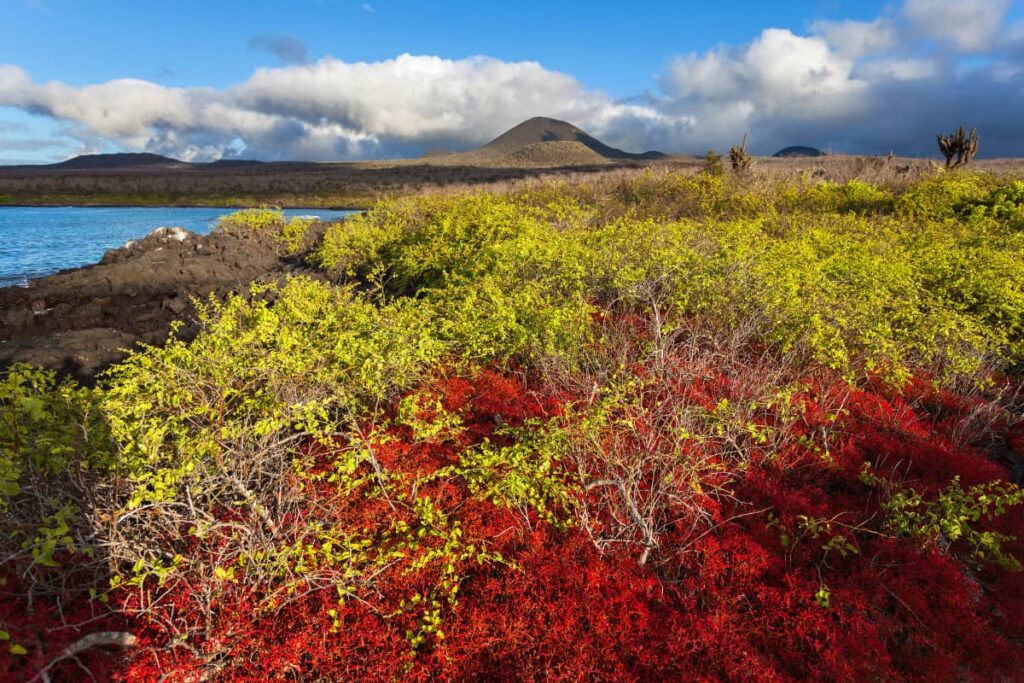
Economy
- Fishing: Sustainable lobster and tuna exports.
- Tourism: Eco-lodges like Wittmer Hotel cater to visitors.
- Agriculture: Farms supply fresh produce to island residents and restaurants.
Climate
- Dry Season (June–November): Cooler temperatures (18–24°C / 64–75°F), ideal for hiking.
- Wet Season (December–May): Warm water (25–28°C / 77–82°F) perfect for snorkeling.
How to Visit Floreana Island
- Cruises: All-inclusive 7–14-day itineraries with guided excursions.
- Island Hopping: Budget-friendly stays in Puerto Velasco Ibarra, with day tours.
Activities & Experiences
- Snorkeling Devil’s Crown: Swim with Galapagos penguins and reef sharks in a submerged crater.
- Mailing a Letter at Post Office Bay: Drop a postcard into the historic wooden barrel and/or take one and hand deliver it during your travels!
- Hiking to Asilo de la Paz: Explore freshwater springs and giant tortoise breeding pens.
- Kayaking at Punta Cormorant: Glide past flamingos and golden rays in a tranquil lagoon.
- Stargazing at Cerro Pajas: Marvel at constellations with zero light pollution.

- Historical Wittmer Hotel Tour: Learn about the island’s first family and the Baroness mystery.
- Birdwatching in the Highlands: Spot the Floreana Mockingbird in miconia shrublands.
- Photography Walk at Green Sand Beach: Capture olive-green sands formed by volcanic olivine.
- Snorkeling with Whale Sharks: Seasonal encounters (December–May) near Champion Islet.
- Conservation Volunteering: Join tortoise reintroduction or invasive plant removal projects.
- Exploring La Lobería: Snorkel with sea lions in a sheltered cove.
- Sunset at Baroness Viewing Point: Watch Galapagos hawks soar over the coastline.
- Marine Sanctuary Dive: Advanced diving at Devil’s Crown (15m+/49ft+ depth).
- Cultural Tour of Puerto Velasco Ibarra: Sample ceviche made from local canchalagua clams.
- Hiking to Cerro Allieri: Trek through miconia forests to spot endemic birds.
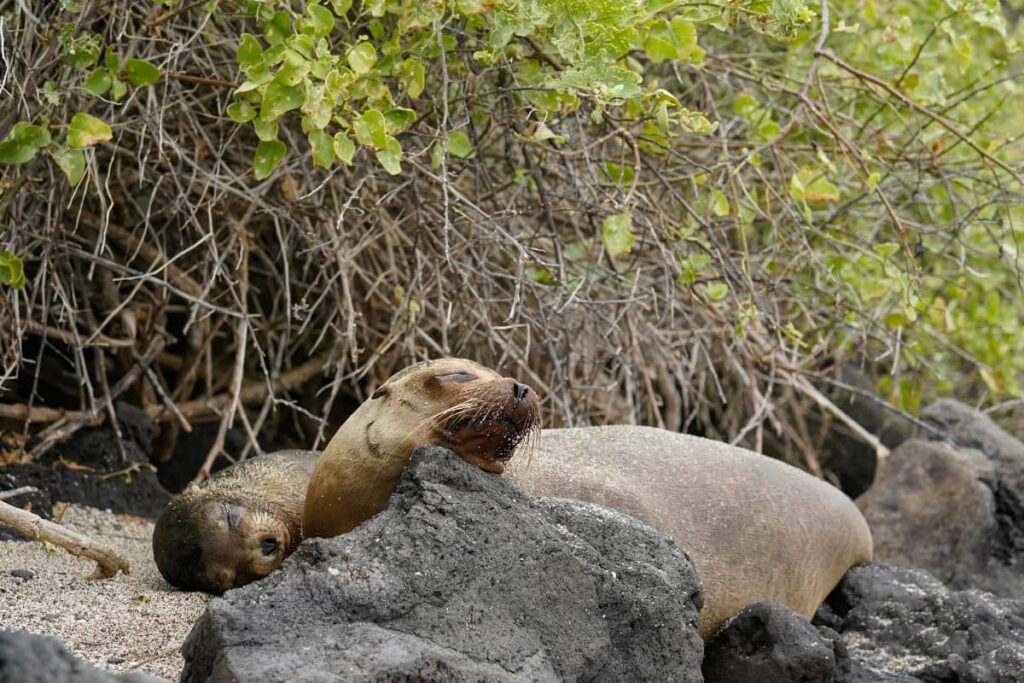
Animal Encounters
Mammals
- Galapagos Sea Lion (Zalophus wollebaeki): Playful pups dominate La Lobería.
- Bottlenose Dolphin (Tursiops truncatus): Leaps alongside boats near Champion Islet.
- Galapagos Fur Seal (Arctocephalus galapagoensis): Rare, smaller, and nocturnal.
Reptiles
- Marine Iguana (Amblyrhynchus cristatus): Forages underwater for algae.
- Galapagos Lava Lizard (Microlophus albemarlensis): Dart across Punta Cormorant trails.
- Floreana Racer Snake (Pseudalsophis biserialis): Non-venomous, endemic predator.
Birds
- Blue-Footed Booby (Sula nebouxii): Males show off bright blue feet during mating dances.
- Galapagos Hawk (Buteo galapagoensis): Apex predator nesting in Scalesia trees.
- Great Frigatebird (Fregata minor): Males inflate red throat pouches to attract mates.
- Floreana Mockingbird (Mimus trifasciatus): Currently survives only on offshore islets.
Fish & Underwater Life
- Whale Shark (Rhincodon typus): Gentle giants visit Champion Islet seasonally.
- White-Tipped Reef Shark (Triaenodon obesus): Harmless to snorkelers at Devil’s Crown.
- Sally Lightfoot Crab (Grapsus grapsus): Bright red against black lava rocks.
- Moorish Idol (Zanclus cornutus): Striped reef fish popular with photographers.
- Golden Ray (Rhinoptera steindachneri): Glide in schools near La Lobería.
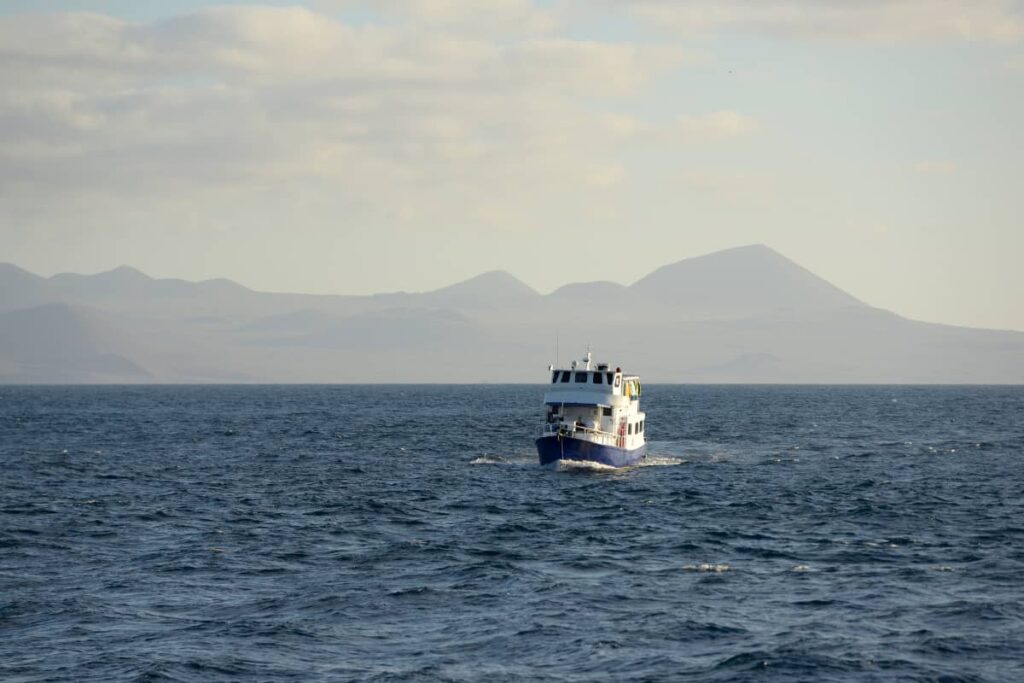
Travel Tips and Practical Information
- Permits: Pay the $200 Galapagos National Park fee in cash upon arrival at the park.
- Packing: Bring reef-safe sunscreen, a waterproof phone case, and hiking shoes. Bring a flashlight if you plan to go into a lava tube!
- Safety: Stay 2 meters (6.5 feet) from wildlife; no flash photography.
- Currency: US dollars are used; ATMs are found on San Cristobal and Santa Cruz Islands. Floreana doesn’t have one, so bring cash with you.
- Language: Spanish is the official language, but guides speak English.
Ready to explore Floreana?
Experience the beauty, history and intrigue of one of Earth’s last wild frontiers!

